I wrote several blogs in the past dealing with British traitors. (Click here to read Agent Jack, “M” and the Fifth Column and click here to read British Fascists and a Mitford.) When I ran across today’s subject in a British publication, I initially thought the article was about Sir Oswald Mosely, the English aristocrat who founded the British Union of Fascists (BUF). However, it was about John Amery, a British traitor during World War II, who was executed for high treason seven months after the war ended. Reading about Amery led me (once again) to the many discussions about traitors and the Fifth Column in Britain before, during, and after the war. Why was Amery executed when others equally guilty escaped the hangman’s noose? Be sure to check out the “Recommended Reading” section at the end of the blog for a deeper dive into this subject.
Shepherd.com
We were asked to join a new web company specializing in book discovery. Shepherd was founded about a year ago by Ben Fox for the purpose of making it easier for readers to search for books they might finding interesting to read. Think of “Goodreads” but an easier process.
Shepherd highlights an author (like me) and one of their books (in our case, it is Where Did They Put the Gestapo Headquarters?). The author is required to review five books in the same genre. So, if a reader is interested say in cooking, they can drill down and find specific books about cooking that have been reviewed by authors in that category. Very simple.
If you like to read, I highly recommend you visit Shepherd.com. If you do, please let me know what you think and I will forward Ben any suggestions or comments you might have.
Click here to visit Shepherd’s website.
Click the books to visit Stew’s bookshelf.
Did You Know?
Did you know that Charles Jamison was known as “the living unknown soldier”? We are all familiar with our nation’s Tomb of the Unknown Soldier. This is the story of a man who was an unknown soldier up to the day he died.
On 8 February 1945, an unconscious, middle-aged man was dropped off at a Boston hospital. His tag read “Charles A. Jamison, 49; Catholic; citizenship American; Cutty Sark.” (No other identification was found.) He suffered from bone marrow infection, hideous sores to the back, and infected shrapnel wounds. Jamison also had an ugly head wound. It took three years for the wounds to heal and in the meantime, when Jamison woke up from his coma, he could only identify himself as “Charles A. Jamison, 49, Catholic, American, Cutty Sark.”
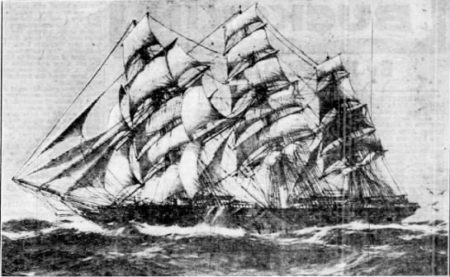
An extensive investigation was conducted by the Red Cross, United States Navy, Merchant Marine, and the Coast Guard. Because he could identify the Royal Navy’s gunnery school in detail, the British Admiralty conducted a search. Nothing was found. All signs pointed to Jamison’s service on a particular merchant ship. The problem was the ship sailed more than a century earlier.

Jamison communicated by writing on a pad. The doctors determined his deafness originated around the time his other wounds were sustained. For years, Jamison sat in a wheelchair in silence. He always maintained his age was forty-nine however, it was clear that Jamison was likely in his sixties. The sailor also eventually disclosed he had been onboard the English clipper, “Cutty Sark.” Again, the problem with that was the ship last sailed under that name more than fifty years before World War II. A manifest was found on a U.S. Navy transport ship that revealed a handwritten entry (on a typewritten document) claiming Jamison had been repatriated after spending four years in a German POW camp. It also noted his birthplace as Boston. However, there were no records of a Charles Jamison being born in Boston and no one on the transport ship had ever heard of or seen Jamison.
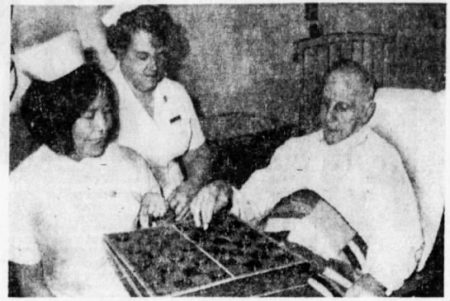
It seemed the more the authorities investigated, the spookier the results became. The true identity of Charles Jamison remains a mystery to this day. Not one person ever visited him in the hospital over all those years. Jamison died in the hospital in January 1975. A fellow patient said Jamison was “the living unknown soldier.”
Treachery and Treason
TREASON: The offense of attempting by overt acts to overthrow the government of the state to which the offender owes allegiance or to kill or personally injure the sovereign or the sovereign’s family.
TREACHERY: Violation of allegiance or of faith and confidence: Treason.
These are definitions provided by Merriam-Webster.
The Treachery Act 1940
The “Treachery Act 1940” was passed by the United Kingdom parliament on 23 May 1940, about one month after Hitler invaded France and the low countries. It came about as part of the government’s “war emergency.” The act was written to expedite the prosecution and execution of enemy spies.
The government felt it necessary to pass the act because existing treason laws with their special rules of evidence and procedure made it difficult to prove and prosecute the accused. With the Treachery Act, the offense was considered a felony and made it easier for the prosecution to obtain convictions and punishments. It was felt the existing Treason Acts might not apply to people who were not British subjects (i.e., the offender did not owe their allegiance to Great Britain). Fundamentally, the Treachery Act was passed to fill that particular “loophole.”
One of the major differences for those convicted of either treason or treachery was the ability of the court to determine punishment. Convicted of treason, the mandatory sentence was death⏤the judge had no choice. However, convicted of treachery, the judge had some wiggle room. Under the Treachery Act, the sentence of death was not mandatory and if the convicted person received the death sentence, it could be commuted by the courts or the British Home Secretary.
Five years after its enactment, the Treachery Act’s special status of treason was abolished, and the offense of treason had to be prosecuted under the same rules of evidence pertaining to the existing Treason Acts. By February 1946, the Treachery Act had been suspended and finally, fully repealed in 1973.
Another wartime emergency legislation passed was “Defense Regulation 18b.” This law was passed to allow for the internment without trial of citizens whose activities, affiliations, or loyalties threatened the security of Britain. The power to intern people was placed in the hands of the home secretary.
Declassified Documents and the Fifth Column
For decades, the British government and historians dismissed the idea that a Fifth Column of disloyal citizens existed. Even several “authorized” accounts, including one by the government and the Security Intelligence Services (SIS: MI5 and MI6), made the case that it was a myth and not one enemy alien was found. The argument was made that the idea of a Fifth Column was a popular theory fabricated to justify the internment of thousands under “Defense Regulation 18b.”
Top secret MI5 files pertaining to the Fifth Column and traitorous activities were withheld from the public until 2000 when the government began to gradually release the files to the National Archives. Between 2000 and 2017, de-classified files became available to historians. Tim Tate wrote a paper and book (refer to “Recommended Reading” at the end of this blog) based on his research of these de-classified files. He found the British government covered up the fact there was a Fifth Column operating in the U.K. with the government’s primary objective as protecting leading political, military, and society figures who were willing to betray their country by working for the Germans. In some instances, these people were plotting the overthrow of the British monarch and government. Documents disclosed these men and women were members of parliament (MP), senior military officers, nobility, and ordinary citizens. Besides a hatred for communism, one common link within the Fifth Column was antisemitism.
The files revealed that between 1939 and 1945, more than seventy British men and women were convicted (in secret trials) of working with the Nazis to assist in winning the war including the occupation of the U.K. These individuals committed sabotage, spied for the Germans, passed on British secrets to Berlin, and even accumulated weapons to be used to support what was considered the inevitable German invasion of the island. Four of the individuals were given death sentences (two were executed) while the remainder received prison terms.
While it was generally known that many British fascists (e.g., Oswald Mosely) were interned without a trial under “Defense Regulation 18b,” the files revealed detailed evidence these people were spying for Germany or working directly on behalf of the Nazi government.
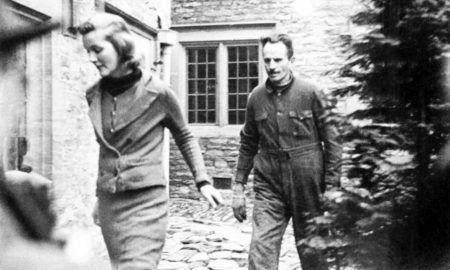
Fascist Organizations
Mosely’s BUF was the “poster child” for British fascists. Strongly pro-Nazi and antisemitic, the BUF did not hide its operations or intent. They openly marched, held public rallies, and even provided training to children (similar to the Hitler Youth). However, there were other fascist organizations that operated in secrecy. Most of these Fifth Column networks were loosely organized and often competed with each other. They included the Link, the National Socialist League (co-founded by William Joyce, a.k.a. “Lord Haw Haw”), the Imperial Fascist League, and the Nordic League (refer to Tim Tate’s article, Treason, Treachery and Pro-Nazi Activities for more information on various Fifth Column organizations and their members).
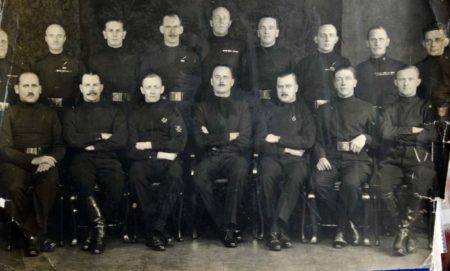
These groups reached the peak of their activities during England’s “darkest hour.” These were the weeks in the late spring and summer of 1940 when the country was bracing for a German invasion. The May invasions by the Germans of France and the low countries forced England to confront the real possibility Hitler would invade their island. It was a common belief that Germany would invade and win, or at the very least, negotiate a peace treaty albeit in Hitler’s favor. (click here to read the blog, Prince, King, and . . . Traitor?). Furthermore, most of the people in these groups believed Germany was the rightful ruler of Europe and their admiration for Hitler was very strong. One offensive attribute the traditional ruling class shared was antisemitism.
Individual Citizens
It wasn’t just organized groups of fascists that MI5 and Churchill were worried about. They knew individual citizens presented a threat to England. De-classified documents proved British citizens acting alone presented a real and viable threat to their country. These documents revealed that the German Abwehr (i.e., military spy agency) had placed British civilians/agents in many households of British high society as servants to spy on their employers. After the war, the government knew who many of these people were, but Churchill made sure none of them were brought to justice. For morale purposes, he did not want the public to know so many of their fellow citizens worked for the Germans.
For those of you familiar with my blog, Rendezvous with the Gestapo (click here read the blog), you’ll recall the story of how we found a photo of a newly arrived B-17 at its English airbase in early 1943. Other than the tail number, there were no markings on the plane. The photo was found in an obscure image repository in Germany. While investigating the plane, I talked to the head of the research department at The National Museum of the Mighty Eighth Air Force (Pooler, Georgia). At one point, the question came up about who took the photograph and how did it happen to end up in a German photo archive. I was told that it was not unusual to find photos of aircraft taken within days of arrival from the United States. The photographers were local British citizens hired by the Germans to spy on airfields and then turn the photos over to their Gestapo or Sicherheitsdienst (SD) handlers for submission to Berlin.
John Amery
John Amery (1912−1945) was born into a family of British politicians. His father, Leo (1873−1955), was a member of parliament (MP), a conservative government minister, and part Jewish (which he hid from the public). John’s younger brother, Julian (1919−1996), followed in the “family business” along a similar trajectory as his father. John Amery had a reputation for being a “difficult” child resulting in his attendance at multiple schools and exhausting a pool of private tutors. As a young adult, he failed in several businesses he attempted to run, and all eventually went into bankruptcy.
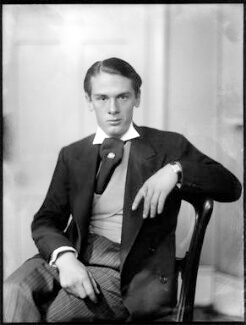
Despite his problems, John lived the life of a playboy and had a fondness for prostitutes. In fact, at the age of twenty-one, John married Una Wing, a former prostitute. She returned to prostitution as John’s income could not support the couple and he was constantly asking his father for money.
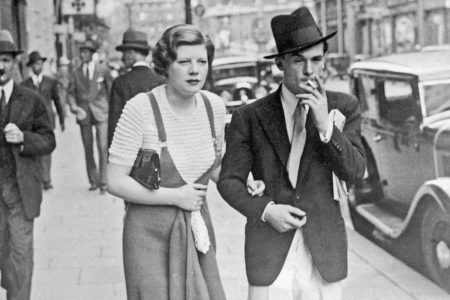
Amery was a staunch anti-communist and virulently antisemitic. He believed Hitler, the Nazi party, and fascism were the only roadblocks to counter Stalin and Bolshevism. Amery moved to France after he declared bankruptcy in 1936. He stayed in France after the Germans invaded the country in May 1940 and began its occupation of Paris the following month. While in Paris, Amery became a devoted follower of the French fascist and collaborator, Jacques Doriot (1898−1945). Doriot was the co-founder of the “Legion of French Volunteers against Bolshevism” (LVF), a French military unit of the German Wehrmacht. Doriot was commissioned as a Sturmbannführer in the Waffen-SS and proudly wore his SS uniform. During this period, Amery and Doriot regularly broadcast pro-Nazi propaganda from Radio Paris. Eventually, Amery’s personality persuaded Vichy to evict him and in 1942, the English ex-pat made his way to Germany and Berlin where Hitler allowed him to remain.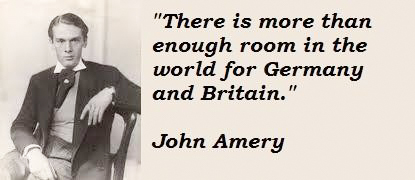
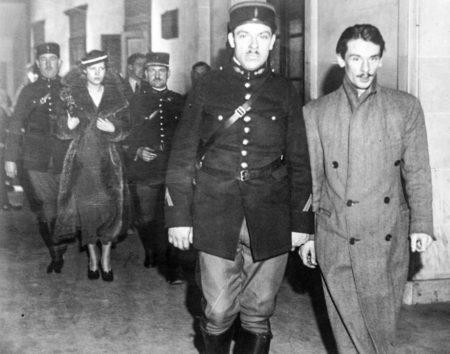
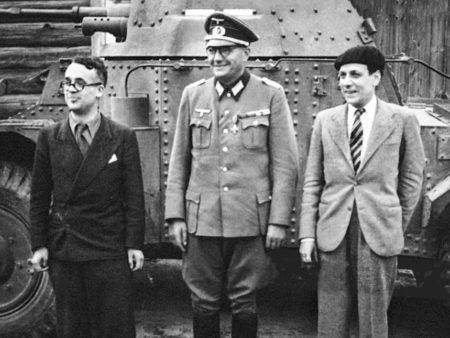
Treason
Amery wasted no time beginning his Nazi propaganda broadcasts from Berlin wherein he appealed to British citizens to join the Germans in their fight against communism. His father, acutely embarrassed, offered to resign his MP position but Churchill refused to allow the resignation.
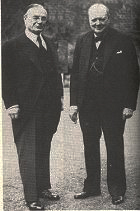
Around 1943, Amery came up with the idea of forming a British-led military unit to join the Wehrmacht (similar to Doriot’s LVF). His plan called to recruit about one hundred British POWs and use the unit as a propaganda tool. Amery took the men he recruited, formed the British Free Corps (BFC), and joined the Waffen-SS. (The group was originally called the Legion of St. George.) The BFC played no significant role or added any value to the German war efforts.
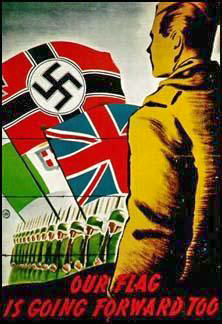

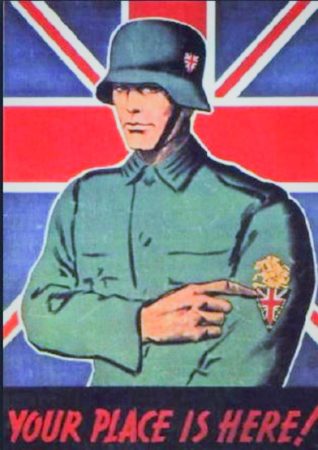
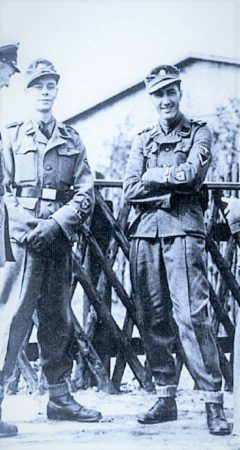
Amery stayed in Berlin while broadcasting and writing propaganda material. Mussolini was dismissed in 1943 as head of the Italian government and taken into custody. After Hitler rescued and freed Mussolini, the former Italian dictator was installed as the leader of Salò Republic (i.e., Italian Social Republic), a German puppet state located in northern Italy. Amery left Germany in late 1944 for Italy to support Mussolini by broadcasting on Radio Rome.
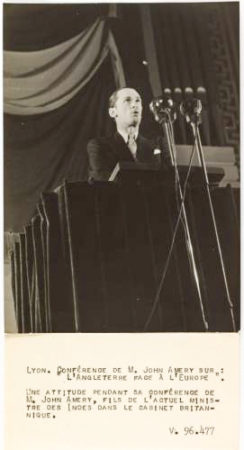
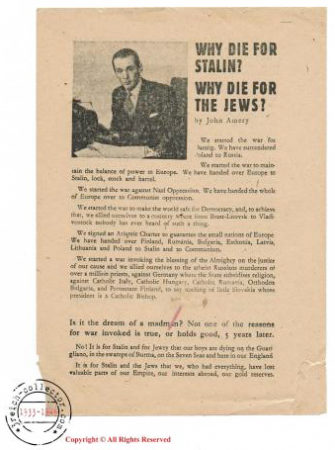
Arrest
On 25 April 1945, Amery and his mistress, Michelle Thomas (a prostitute), were captured by Italian partisans near Como, Italy after trying to escape by car to Switzerland. They were to be executed but a decision was made to send them to Milan where the two could be handed over to Allied authorities. (Thomas was eventually released.) The fact Amery was English likely contributed to their stay of execution by the Italians.
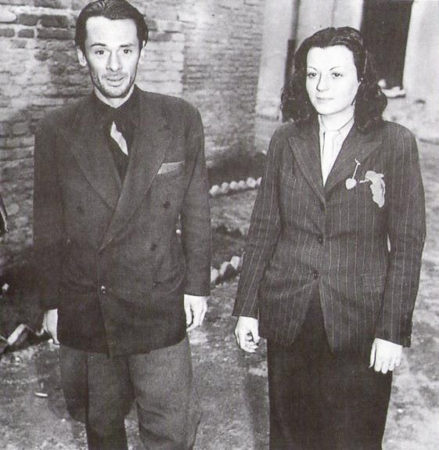
Capt. Alan Whicker (the future popular British broadcaster) took them into custody. Amery was wearing his Italian fascist uniform. It didn’t take long for John Amery to be returned to London to face trial as a traitor.
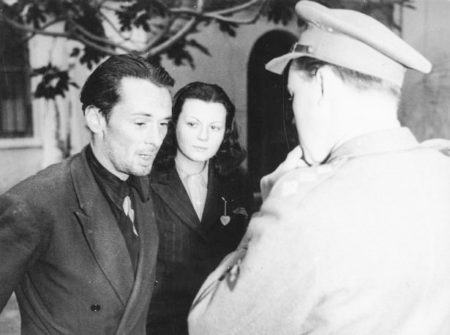
Trial and Execution
Amery’s treason trial took place at the Old Bailey courthouse in London on 28 November 1945. The trial lasted only eight minutes⏤the defendant pleaded guilty. It has been speculated that Amery did not want to have his family endure a trial. Julian tried unsuccessfully to argue that his brother was a Spanish citizen and therefore could not have committed treason against Britain. By pleading guilty to treason, Amery knew that there was only one penalty the judge could render: death by hanging.
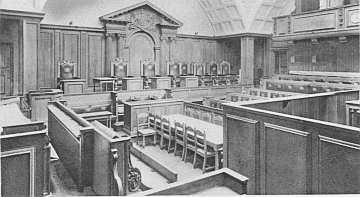
John Amery’s execution was scheduled for 19 December in Wandsworth Prison at nine in the morning. Upon meeting the executioner, Albert Pierrepoint, and before the noose was placed around his neck, Amery said, “Mr. Pierrepoint, I’ve always wanted to meet you, but not, of course, under these circumstances.” John Amery died at the age of thirty-three.
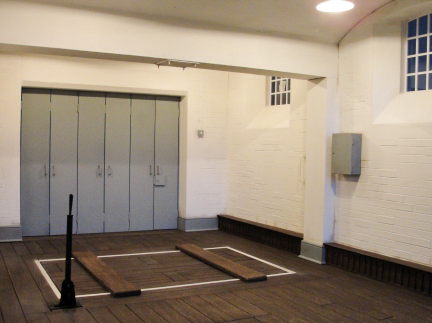

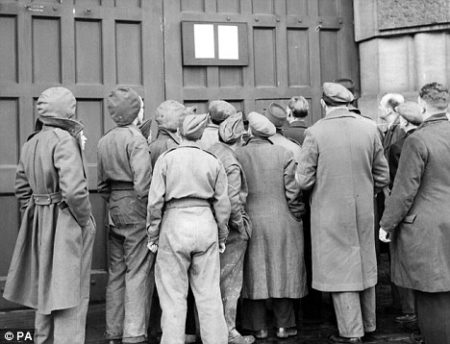
After the execution, Amery’s remains were buried in the prison cemetery in an unmarked grave. (The bodies of executed criminals became the property of the British government.) After Julian’s death in 1996, the family had Amery’s remains exhumed and cremated. His ashes were scattered over France.
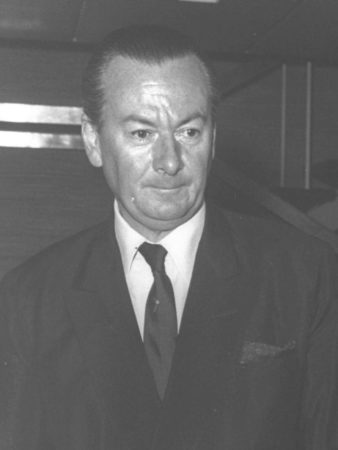
In his 1974 autobiography, Pierrepoint said of Amery, “He was the bravest person I’d ever hanged.”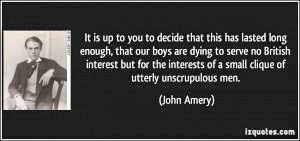
Government Documents and Rudolf Hess
On 10 May 1940, the deputy leader of the Nazi Party and one of Hitler’s oldest comrades, Rudolf Hess (1894−1987) flew alone to Scotland on a personal mission to end the war between Great Britain and Germany. Hess was captured and turned over to the SIS which determined Hess was mentally unstable but truly believed a peace accord could be reached for three reasons: Hitler wanted peace, British public opinion did not align with Churchill’s policy of resistance and lastly, Hess was convinced that a significant number of influential Britons believed peace between the countries could be attained through negotiations. In other words, high-ranking officials and nobility supported the idea of Germany becoming Europe’s master. How would Hess have come to that conclusion? Food for thought.
Unlike the United Sates government, Great Britain and its security services are not subject to transparency under the Freedom of Information Act, or equivalent laws. Therefore, there are likely many more documents remaining classified that pertain to 80− and 90−year-old history. British SIS can pick and choose which documents to release. However, there have been sufficient number of documents de-classified to prove the existence of a substantial Fifth Column, both collectively and individually, operating in England during World War II. Tim Tate has proven this.
Next Blog: “The Petticoat Panel”
Correspondence and Commentary Policy
We welcome everyone to contact us either directly or through the individual blogs. Sandy and I review every piece of correspondence before it is approved to be published on the blog site. Our policy is to accept and publish comments that do not project hate, political, religious stances, or an attempt to solicit business (yeah, believe it or not, we do get that kind of stuff). Like many bloggers, we receive quite a bit of what is considered “Spam.” Those e-mails are immediately rejected without discussion.
Our blogs are written to inform our readers about history. We want to ensure discussions are kept within the boundary of historical facts and context without personal bias or prejudice.
We average about one e-mail every two days from our readers. We appreciate all communication because in many cases, it has led to friendships around the world.
★ Read and Learn More About Today’s Topic ★
Breuer, William B. Unexplained Mysteries of World War II. New York: Chartwell Books, 2016.
Faber, David. Speaking for England: Leo, Julian, and John Amery – the Tragedy of a Political Family. New York: Free Press, 2005.
Fielding, Steve. Pierrepoint: A Family of Executioners: The Story of Britain’s Infamous Hangmen. London: Blake, 2006.
Jeffery, Keith. MI6: The History of the Secret Intelligence Service 1909−1949. London: Bloomsbury Publishing, 2010.
Lovell, Mary S. The Sisters: The Saga of the Mitford Family. New York: W.W. Norton & Company, 2001.
Mylonas, Harris and Scott Radnitz. Enemies Within: The Global Politics of Fifth Columns. New York: Oxford University Press, 2022.
Pierrepoint, Albert. Executioner: Pierrepoint. London: Harrap, 1974.
Prysor, Glyn. The ‘Fifth Column’ and the British Experience of Retreat, 1940. War in History; Vol. 12, No. 4 (November 2005), pp. 418-447. Published by Sage Publications, Inc. Click here to read the article.
Tate, Tim. Hitler’s British Traitors: The Secret History of Spies, Saboteurs, and Fifth Columnists. New York: Icon Books , 2018.
Tate, Tim. Treason, Treachery, and Pro-Nazi Activities by the British Ruling Classes During World War Two. Institute for the Study of Societal Issues, 25-27 April 2019. Click here to read the article.
Weale, Adrian. Patriot Traitors: Roger Casement, John Amery, and the Real Meaning of Treason. New York: Viking Press, 2001.
The VENGEFUL Execution of John Amery
YouTube Video, click here to watch.
John Amery Interview in Norway – 1944
YouTube Video, click here to watch.
Disclaimer:
There may be a chance that after we publish this particular blog, the video links associated with the blog are no longer accessible. We have no control over this. Many times, whoever posts the video has done so without the consent of the video’s owner. In some cases, it is likely that the content is deemed unsuitable by YouTube. We apologize if you have tried to access the link and you don’t get the expected results. Same goes for internet links.
What’s New With Sandy and Stew?
Sandy and I hope all of you are having (or had) a wonderful holiday season these past four weeks. We’re looking forward to 2023. Besides providing you with interesting blog topics, our goals include producing the second edition of volume two of Where Did They Put the Guillotine? and publishing the second volume of Where Did They Put the Gestapo Headquarters? It will be a very busy year for us trying to accomplish these goals in between a very aggressive travel schedule. 🛳
Many thanks to those who provided guest blogs in 2022. We enjoyed working with each and every one of you. Sandy and I would like to thank our friends in Europe who were kind enough to get together with us during our visits. We’ll be there again in 2023 for three or four trips and we hope to see you all again.
Thank you to all of you who subscribe to our bi-weekly blogs. It seems there isn’t a day that goes by where we don’t increase our readership. Please let your history buff friends and family members know about our blog site and blogs.
Someone Is Commenting On Our Blogs
Sandy and I would like to thank everyone who took the time in 2022 to reach out to us either through a blog or independently. We had a record number of e-mails come through this year; almost one every other day. Your comments, suggestions, and general observations are always appreciated. Some of you pointed out errors and for that, we are grateful. We always go back and update the blog to reflect the correct information.
We hope all of you have a great and Happy New Year! We’re looking forward to hearing from as many of you as possible in 2023. Please tell your friends about our bi-weekly blogs.
🥂 🎉
If there is a topic you’d like to see a blog written about, please don’t hesitate to contact me. I love hearing from you so keep those comments coming.
Thank You
Sandy and I appreciate you visiting with us. We have some exciting things on the horizon and we’ll keep you updated as we go along.
Share This:
Follow Stew:
Find Stew’s books on Amazon and Apple Books.
Please contact Stew directly for purchase of books, Kindle available on Amazon. Stew.ross@Yooperpublications.com or Contact Stew on the Home Page.
Please note that we do not and will not take compensation from individuals or companies mentioned or promoted in the blogs.
Copyright © 2022 Stew Ross







Discussing female Allied Espionage Agents, no one everv mentions enemy female Espionage Agents such as the Danish, although Russian born Abweher Agent, Vera von Schalburg. Vera was apprehended at Portgordon Railway Station at approximatey 07.00 on 28 September 1940 having landed by Luftwaffe Sea Plane with two male Agents who were also apprehended and executed at Wandsworth Prison in London in September 1940. However, its a very long story, but Vera was never put on trial and survived the war, and remained in England for the rest of her life. The “golden nugget” is that no one has ever published what happened to Vera post war, when did she die, and where is she buried, and who her UK family are. Its almost certain that Vera was provided with another identity because of her work with Mi6 post war.
Hi Lionel; thank you for contacting us regarding our recent blog. You’re correct. Most of the stories are about Allied female agents, especially the SEO. I have written about female traitors (e.g., Coco Chanel, Florence Gould, etc.). Do you think Vera’s story would make an interesting blog topic? Let me know. STEW